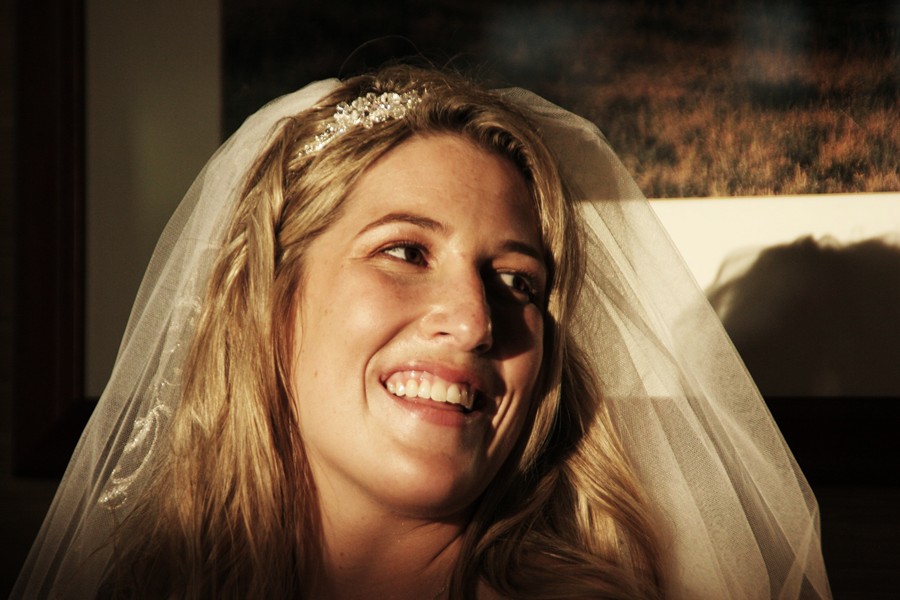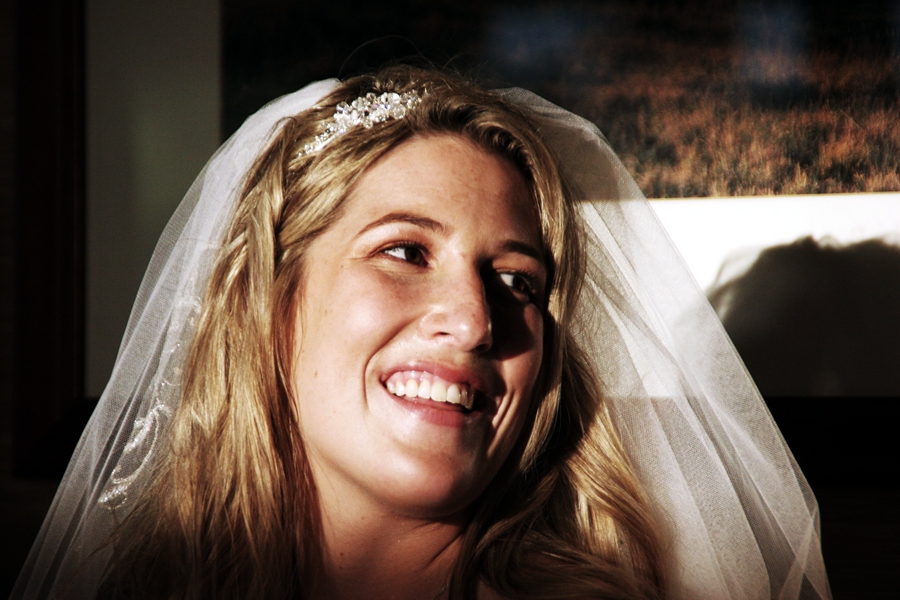I'm slowly coming around to the notion that no matter how perfect the composition, digital photographs almost always benefit from some post-processing. Back when I shot hand-rolled Tri-X from bulk and printed everything myself, I routinely changed papers and printing filters, dodged, burned, cropped, and distorted, in search of the perfect print. (I have a great before-and-after example that I will post when I receive the subject's permission.) Ansel Adams, recall, did most of his work in the darkroom.
Here's a 10-minute example of digital processing. Let's start with the raw photo; only the output size has changed:

The near-sunset direct light makes Leah look radiant. The expression—this was during our dad's speech—is purely her. And the reflections off the picture behind her don't distract me too much. Why would I change this shot?
Because I think it can look even better.
Now, I really don't have much experience with digital photo alterations. And I haven't invested in Photoshop; I'm just using Microsoft's Digital Image Suite 2006, which they have discontinued. So you won't see any dramatic changes.
First, let me desaturate slightly (to 70%) and increase the contrast slightly (to 130%):

Huh. I think that's a little better. She's better defined, and the light looks more golden than red. What if I do more? Saturation 30%, contrast 150%, and reducing the shadow level by 20%:

Too much? Maybe. OK, add more color up to 50% saturation, stay at 150% contrast, shadows down only 15%, and change the color temperature from 5700K daylight to 6200K (adding some warmth back in after the desaturaion):

I'm not sure which of these looks best. I'd appreciate feedback from the blogosphere. I will probably do another version that removes her stray hairs, reduces the ghost reflections behind her, and brings out her eyes just a bit more. Maybe I'll even buy Photoshop.
Half Moon Bay, Calif., 5 June 2010, 19:40 PDT. Canon 20D, 1/200s at f/6.3, ISO 800, 200mm.